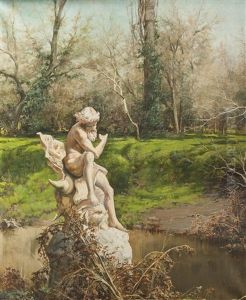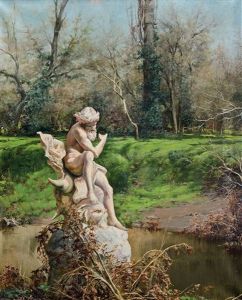Domingo Puig Y Sauret Paintings
Domingo Puig Y Sauret was a Spanish painter and sculptor born in Barcelona in 1927. Throughout his life, he developed a unique artistic style that incorporated elements of surrealism, abstraction, and expressionism. His works often featured bold colors, dynamic compositions, and an exploration of the human condition, which made them resonate with audiences and critics alike.
Puig Y Sauret studied at the School of Fine Arts in Barcelona where he honed his skills in various mediums. His early career was marked by experimentation as he sought to find his voice as an artist. During the 1950s, he became increasingly interested in the abstract art movement, which was gaining prominence around the world. This interest was reflected in his evolving style, characterized by a departure from traditional figurative painting towards a more abstract and symbolic representation of reality.
Throughout the 1960s and 1970s, Domingo Puig Y Sauret's work continued to evolve as he began to gain greater recognition in the Spanish art scene. His paintings and sculptures of this period show a confident artist with a mature style, characterized by an intense use of color and form. He participated in numerous exhibitions, both nationally and internationally, and his works were acquired by private collectors and institutions.
In the later years of his career, Puig Y Sauret remained active in the art community, continuing to exhibit his work and engage with new generations of artists and enthusiasts. His contribution to the Spanish art scene was significant, and his influence can be seen in the works of younger artists who were inspired by his approach to color, form, and the emotional depth of his compositions.
Domingo Puig Y Sauret passed away in 2018, leaving behind a rich legacy of artistic innovation and creativity. His works remain a testament to his vision and continue to be celebrated for their originality and emotional impact. He is remembered as a passionate artist who constantly sought to push the boundaries of his medium and express his unique perspective on life and art.




